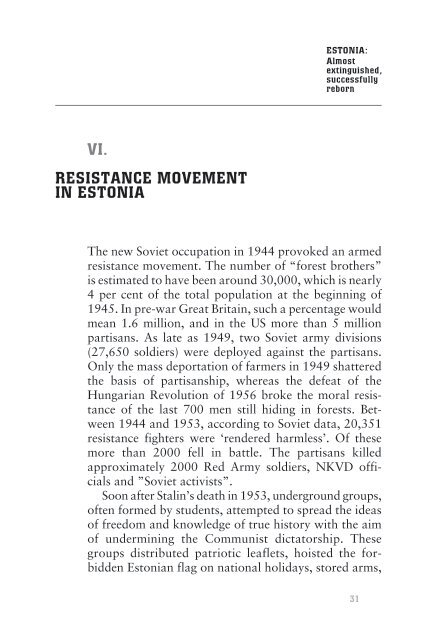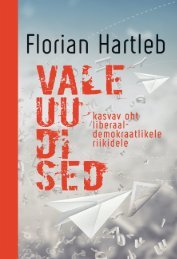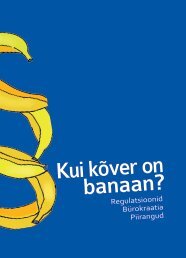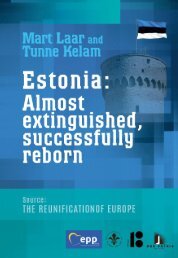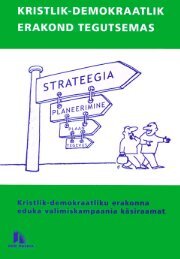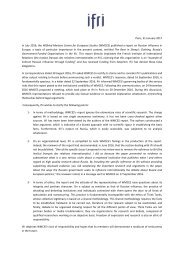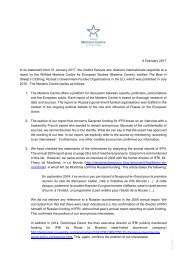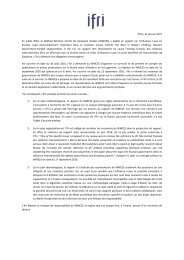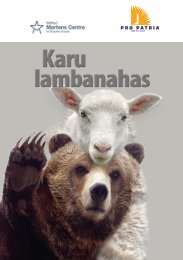ESTONIA: Almost extinguished, successfully reborn
The following text is the shortest possible review to help inform friends and guests from abroad about Estonia’s experience with foreign occupation and totalitarianism as well as its road to peacefully re-establishing national inde-pendence on the basis of democracy. Tunne Kelam Member of the European Parlament
The following text is the shortest possible review to help inform
friends and guests from abroad about Estonia’s experience with
foreign occupation and totalitarianism as well as its road to
peacefully re-establishing national inde-pendence on the basis
of democracy.
Tunne Kelam
Member of the European Parlament
You also want an ePaper? Increase the reach of your titles
YUMPU automatically turns print PDFs into web optimized ePapers that Google loves.
<strong>ESTONIA</strong>:<br />
<strong>Almost</strong><br />
<strong>extinguished</strong>,<br />
<strong>successfully</strong><br />
<strong>reborn</strong><br />
VI.<br />
RESISTANCE MOVEMENT<br />
IN <strong>ESTONIA</strong><br />
The new Soviet occupation in 1944 provoked an armed<br />
resistance movement. The number of “forest brothers”<br />
is estimated to have been around 30,000, which is nearly<br />
4 per cent of the total population at the beginning of<br />
1945. In pre-war Great Britain, such a percentage would<br />
mean 1.6 million, and in the US more than 5 million<br />
partisans. As late as 1949, two Soviet army divisions<br />
(27,650 soldiers) were deployed against the partisans.<br />
Only the mass deportation of farmers in 1949 shattered<br />
the basis of partisanship, whereas the defeat of the<br />
Hungarian Revolution of 1956 broke the moral resistance<br />
of the last 700 men still hiding in forests. Between<br />
1944 and 1953, according to Soviet data, 20,351<br />
resistance fighters were ‘rendered harmless’. Of these<br />
more than 2000 fell in battle. The partisans killed<br />
approximately 2000 Red Army soldiers, NKVD officials<br />
and ”Soviet activists”.<br />
Soon after Stalin’s death in 1953, underground groups,<br />
often formed by students, attempted to spread the ideas<br />
of freedom and knowledge of true history with the aim<br />
of undermining the Communist dictatorship. These<br />
groups distributed patriotic leaflets, hoisted the forbidden<br />
Estonian flag on national holidays, stored arms,<br />
31


